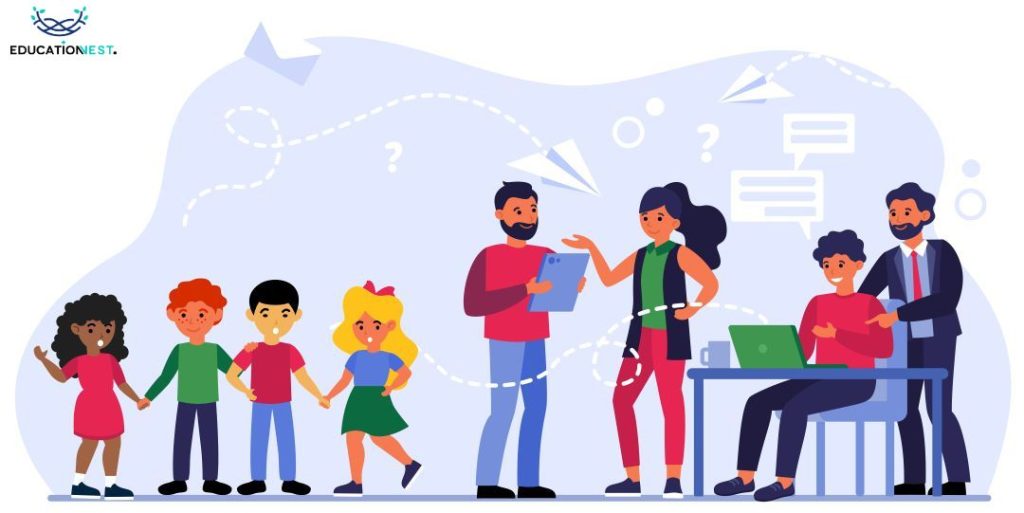
In the ever-evolving landscape of education, fostering positivity and nurturing meaningful relationships within schools has become paramount. Positive schooling isn’t just about academics; it’s about creating an environment where students, teachers, and staff thrive emotionally and socially. In this comprehensive blog post, we’ll explore the vital role of positive relationships in schools, the elements of a positive classroom culture, and the transformative impact of relationships education. Join us on this journey of understanding how positivity and connections can elevate the educational experience.
Positive Relationships in Schools: The Foundation of Success

Positive relationships are the bedrock of a successful school community. These connections extend beyond teacher-student relationships and encompass interactions among students, teachers, administrators, and even parents. Here’s why they matter:
- Emotional Well-Being: Positive relationships create a nurturing environment that supports students’ emotional well-being. Feeling safe, valued, and cared for at school is essential for students’ mental health.
- Academic Success: When students have positive relationships with their teachers and peers, they are more engaged in learning. They feel comfortable asking questions, seeking help, and participating in classroom activities.
- Behavioral Improvement: A positive school culture promotes desirable behavior and reduces discipline issues. Students are more likely to follow rules when they feel a sense of belonging.
- Teacher Morale: Positive relationships between teachers and colleagues boost morale and collaboration. Teachers who support each other are more effective in the classroom.
- Parent Involvement: Building positive relationships with parents fosters a strong partnership between schools and families, enhancing students’ educational experiences.
Elements of a Positive Classroom Culture
Creating a positive classroom culture goes hand in hand with nurturing relationships. Here are essential elements that contribute to a thriving classroom culture:
- Respect: Teachers model respect, and it’s reciprocated by students. Respectful interactions set the tone for a positive environment.
- Clear Expectations: Students thrive when they know what’s expected of them. Clear guidelines and expectations create a sense of security.
- Effective Communication: Open, honest, and respectful communication is key. Encourage students to express themselves and actively listen to their concerns.
- Inclusivity: Ensure that every student feels included and valued. Celebrate diversity and create an environment where differences are embraced.
- Collaboration: Promote teamwork and collaboration among students. Encourage group activities and peer learning experiences.
- Celebration of Achievements: Acknowledge and celebrate both academic and non-academic achievements. Recognizing effort and progress boosts motivation.
- Problem-Solving Skills: Teach students how to resolve conflicts and disagreements constructively. These skills are invaluable for social and emotional development.
Also Read:
Classroom Activities That Are Easy to Prepare and Implement
Positive Student-Student Relationships: The Power of Peer Connections
While teacher-student relationships are crucial, fostering positive student-student relationships is equally vital. These peer connections create a supportive network within the classroom. Here’s why they matter:
- Peer Support: Students often turn to their peers for help and advice. Positive relationships among students create a support system for academic and personal challenges.
- Reduced Bullying: A positive classroom culture discourages bullying and negative behavior. When students value their peers, they’re less likely to engage in harmful actions.
- Increased Engagement: Collaborative learning environments promote active engagement. When students feel comfortable with their peers, they’re more likely to participate and contribute.
- Diversity Appreciation: Positive peer relationships allow students to appreciate and learn from the diverse backgrounds and perspectives of their classmates.
- Emotional Resilience: Peer support helps students develop emotional resilience. They learn to cope with challenges and bounce back from setbacks.
- Leadership Skills: Positive peer relationships can nurture leadership skills as students collaborate, lead group projects, and support one another.
Relationships Education: Empowering Students with Social Skills
Relationships education is an educational approach that focuses on teaching students the skills and knowledge necessary for building healthy relationships. It equips students with essential life skills that extend beyond the classroom. Here’s what relationships education entails:
- Communication Skills: Students learn how to express themselves effectively, listen actively, and resolve conflicts peacefully.
- Empathy: Understanding and respecting others’ feelings and perspectives is a core component. Students learn to see situations from different viewpoints.
- Consent and Boundaries: Relationships education teaches the importance of consent and respecting personal boundaries, fostering a culture of respect.
- Healthy Friendships and Relationships: Students learn to identify signs of healthy friendships and relationships and how to seek help if they encounter issues.
- Online Relationships: As digital natives, students need guidance on forming positive online relationships and navigating the digital world safely.
- Self-Respect: Students learn to value and respect themselves, which is foundational for building healthy relationships with others.
Classroom Position: The Role of Teachers
Teachers play a pivotal role in creating a positive classroom culture and nurturing relationships. Here’s how educators can make a difference:
- Lead by Example: Teachers model positive behavior and interactions. Students often mimic the behavior they observe.
- Build Trust: Create a safe and trusting classroom environment where students feel comfortable expressing themselves.
- Individual Attention: Get to know your students as individuals. Understand their strengths, interests, and challenges to provide personalized support.
- Effective Feedback: Provide constructive feedback that focuses on growth and improvement. Encourage a growth mindset.
- Open Communication: Foster open lines of communication with students and parents. Keep everyone informed about classroom activities and expectations.
- Inclusivity: Ensure that your classroom is inclusive and welcoming to all students, regardless of their backgrounds or abilities.
Conclusion
In the world of education, fostering positivity, and nurturing relationships is the key to unlocking the full potential of both students and teachers. A positive classroom culture sets the stage for meaningful learning experiences, improved emotional well-being, and lasting connections. Relationships education equips students with the essential social and emotional skills they need to thrive.

